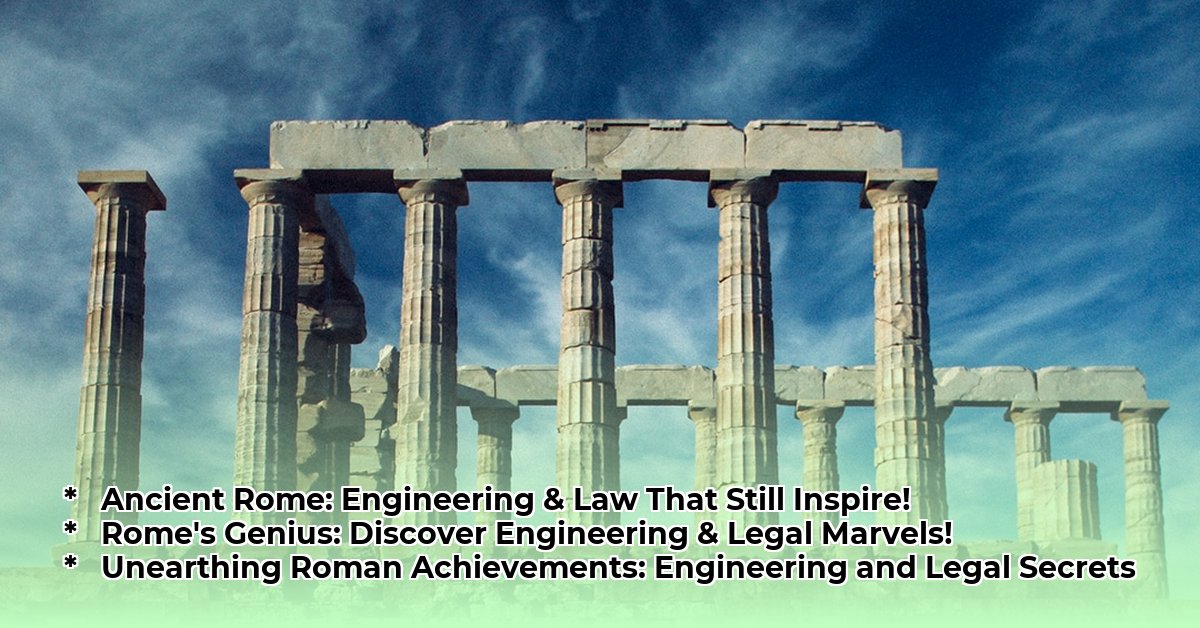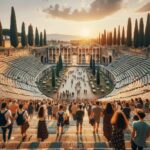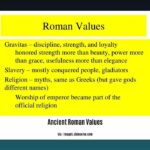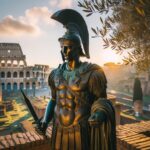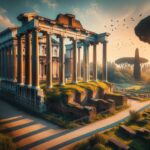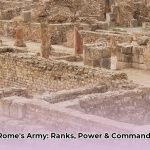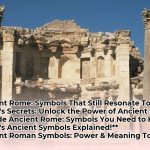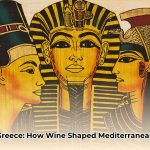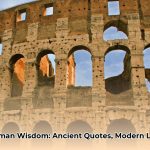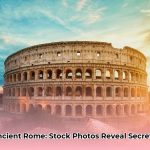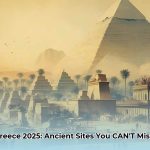Have you ever considered the profound impact a civilization from millennia past can still have on our modern world? Travel back to ancient Rome, not for the spectacle, but to unearth the remarkably engineered structures, sophisticated legal systems, and pioneering administrative methods that laid foundations for centuries to come. This journey isn’t merely a historical retrospective; it’s an immersive exploration into the enduring lessons embedded within the ancient Roman achievements, offering invaluable, actionable insights for contemporary society. From their robust roads that still define modern routes to legal principles that underpin global jurisprudence, discover how the ingenuity of the past can inform and inspire a more sustainable, equitable, and prosperous future. Their Roman roads were a marvel of engineering.
Engineering the Eternal: Lessons from Roman Infrastructure
The Strategic Arteries: Roman Road Networks
Imagine forging an empire that spans continents, maintaining control, and facilitating unprecedented trade. The Romans understood that a vast, high-quality infrastructure was not a luxury but the very backbone of their power. Their extensive road network, ultimately stretching over 50,000 miles across the empire, served as crucial arteries for rapid military deployment, efficient communication, and the seamless flow of goods and people. These masterfully engineered roads, known as Viae Romanae, were built with meticulous planning and layered construction. They typically comprised a foundation of large stones (statumen), followed by a layer of rubble and cement (rudus), a core of concrete or gravel (nucleus), and finally, a paved surface (pavimentum) of large, tightly fitted stones. This multi-layered approach ensured unparalleled durability, with many segments still in use today.
Modern infrastructure planners can glean profound lessons from the Roman commitment to long-term infrastructure investment. How can we emulate their foresight to develop robust transportation systems — like high-speed rail or widespread broadband access — that not only connect communities physically but also stimulate economic growth and foster social cohesion, bridging divides and catalyzing innovation for generations?
Aqueducts: The Lifeblood of an Empire
In any advanced society, access to clean, reliable water is paramount. The Romans addressed this fundamental need with their magnificent aqueducts, engineering marvels designed to transport fresh water from distant sources directly into their burgeoning cities. These complex systems utilized gravity, channeling water through an intricate network of underground pipes, tunnels, and iconic arched structures. Celebrated examples like the Pont du Gard in southern France and the Aqueduct of Segovia in Spain stand as monumental testaments to Roman engineering prowess and their dedication to public health and sanitation. Some sections of these ancient aqueducts continue to supply water to this day, a truly astonishing feat.
Contemporary civil engineers and urban planners can derive critical insights from the remarkable longevity and efficiency of Roman aqueducts. The Romans perfected the art of sustainable, large-scale infrastructure projects. Could their ancient techniques, material compositions, and understanding of natural forces offer viable solutions for pressing challenges in modern water management and the sustainable design of future urban landscapes?
Roman Concrete: A Foundation for Eternity
One of the most revolutionary secrets behind Rome’s architectural triumph was their development and widespread use of an exceptionally durable form of concrete. This innovative material allowed them to construct colossal and complex structures like the iconic Colosseum, the majestic Pantheon, and numerous enduring bridges and harbors, many of which have largely withstood millennia. Roman concrete, unlike modern Portland cement, was typically made from a unique mix of volcanic ash (known as pozzolana), lime, and aggregate, often incorporating volcanic rocks (tuff). This composition contributed significantly to its profound strength, resilience, and remarkable ability to set even underwater.
Modern engineers and material scientists are intensely studying the precise chemical and structural properties of Roman concrete to develop more sustainable and resilient construction materials for today. There is growing interest in bio-based concretes and alternative binders that offer more eco-friendly alternatives to traditional, energy-intensive cements. Could the key to crafting environmentally superior and long-lasting building materials indeed lie within these ancient Roman recipes, providing new approaches to sustainable construction? This field of research holds significant promise for future material science breakthroughs.
Pillars of Society: Law, Governance, and Social Welfare
The Enduring Principles of Roman Law
Roman law laid seminal principles for justice, fairness, and the comprehensive rule of law, profoundly shaping and influencing contemporary legal systems across the globe. Pioneers of their era, the Romans introduced groundbreaking concepts such as “innocent until proven guilty” and “equality before the law,” ideas that resonate deeply in modern jurisprudence. They established formal courts, appointed specialist judges, and codified legal professionals, thereby creating a comprehensive and remarkably consistent framework for the administration of justice across their vast and diverse empire.
The core of early Roman law was enshrined in the Twelve Tables, a foundational code adopted around 450 BCE, detailing laws concerning property, religion, and civil disputes. Later, the Byzantine emperor Justinian’s Corpus Juris Civilis (Body of Civil Law), compiled between 529 and 535 CE, synthesized centuries of Roman legal thought into one monumental document. This influential work became a cornerstone for civil law systems worldwide, emphasizing rational decision-making and written statutes. How did these foundational concepts become so integral to modern legal systems and enduring principles of justice? The Roman emphasis on codified, transparent law provided a level of predictability and consistency previously unseen in ancient societies, cementing their legal legacies that persist today.
Pragmatic Adaptation: Honing Existing Ideas
The enduring success of the Romans often stemmed not from inventing entirely new concepts, but from their unparalleled ability to improve upon, adapt, and scale existing ideas. The arch, for instance, a structural element known for centuries, was perfected by Roman engineers and integrated extensively into their iconic architecture, bridges, and aqueducts, revolutionizing urban planning and structural stability. Their sophisticated military tactics, including the disciplined organization of the Roman legion into highly effective cohorts and the development of innovative siege warfare techniques, consistently led to decisive victories and sustained empire building. Furthermore, Roman culture flourished through the widespread adoption of Latin for administration, governance, and communication, creating a linguistic foundation that has had a profound and lasting impact on the development of Romance languages and a significant portion of the English lexicon.
Beyond architecture and military, this pragmatic approach extended to information dissemination. The Acta Diurna (“daily acts”), carved on stone or metal and posted in public places like the Roman Forum from around 131 BCE, served as early newspapers, detailing military victories, public events, and even birth and death notices. This demonstrates a Roman commitment to public discourse and information sharing, adapting existing methods of communication to serve the needs of a sprawling empire. Their adoption of the codex, a stack of bound pages, also revolutionized the format of literature, proving more practical than scrolls and laying the groundwork for the modern book.
Lessons in Governance and Public Welfare
The study of Roman governance offers invaluable insights into effective policy-making and the complexities of public administration. Ancient Rome pioneered many concepts that resonate with modern social safety nets. How did Roman welfare work in a massive urban center? The annona, Rome’s renowned grain dole, was a cornerstone. Initially a political tool, it evolved into a crucial program providing eligible citizens with a consistent monthly supply of grain to prevent widespread famine and maintain social stability. Managed by the Praefectus Annonae, this logistical feat ensured basic food security for centuries.
Beyond food, Emperor Trajan established the alimenta program around 98 CE, an innovative initiative offering financial aid to impoverished children born of free citizens in Italy. This program, funded through low-interest loans to landowners, aimed to boost child welfare and population growth. The Romans also implemented public health programs with extensive underground sewage systems and public toilets, some even levied taxes for their use, funding cleaning and upkeep. Furthermore, the practice of conducting a census — a detailed enumeration of citizens and their property — became a fundamental tool for effective governance and tax collection, a system still vital globally today.
While not without limitations (primarily benefiting Roman citizens within the city of Rome, and sometimes susceptible to political manipulation), the Roman welfare system, alongside their massive investments in public works, provided vital employment opportunities and dramatically improved citizens’ living standards. Modern leaders can draw extensively from Rome’s documented successes and failures to inform contemporary strategies for societal development, ensuring both stability and equitable access to resources.
The Art of War: Adapting Roman Military Strategies
Organizational Adaptability: The Legionary Structure
The bedrock of Rome’s formidable military machine was its highly flexible and adaptable legionary structure. Each legion, comprising approximately 4,000 to 6,000 highly trained soldiers, was further subdivided into centuries led by experienced centurions. This tiered system was critical for operational flexibility across diverse battlefields. The earlier maniple formation, utilizing a checkerboard arrangement of soldiers organized by experience, offered remarkable dynamic movement. This system later evolved into the more consolidated cohort system, grouping soldiers into larger, more cohesive units for enhanced command and precise control. Modern military forces can effectively emulate this tiered, adaptable structure, organizing units with flexible command and control hierarchies to ensure optimal agility and responsiveness in complex operational environments.
Tactical Innovation and Psychological Warfare
Beyond organizational prowess, the Romans were undisputed masters of battlefield innovation and strategic thinking. The iconic testudo formation, a near-impenetrable shield wall, offered comprehensive protection against missile attacks and remarkably mirrors modern riot control tactics and armored personnel formations. The effective wedge formation exploited concentrated force to decisively break through enemy lines. Furthermore, their sophisticated psychological warfare — including public displays of overwhelming strength, targeted strategic propaganda, and intimidating displays like crucifixion as a deterrent — significantly enhanced their military operations, influencing enemy morale and public perception. Elements of this multifaceted approach resonate in modern hybrid warfare and information operations.
Logistical Prowess: Sustaining the War Machine
The Roman military’s success was not solely about combat
; it was underpinned by exceptional strategic intelligence, particularly regarding logistics. Their sophisticated supply chains, extensive network of strategically located supply depots, and the vast, interlocking road systems ensured prolonged and sustained operations across enormous distances. This meticulous logistical planning was absolutely crucial for mission success and endurance, enabling legions to cover as many as 25 miles per day. Modern forces must prioritize meticulous logistical planning, developing and maintaining highly efficient supply chain management to ensure continuous mission success, mirroring the Romans’ foundational commitment to sustainment.
Technological Integration and Combined Arms
The Romans were never hesitant to aggressively adopt, adapt, and integrate new technologies into their military machine. Their innovative use of powerful siege machines (such as catapults, ballistas, and battering rams) combined with fully integrated infantry, cavalry, and even rudimentary artillery demonstrated a profound adaptability and a holistic approach to warfare. Furthermore, their adept naval operations were instrumental in securing vital trade routes and projecting Roman power across the Mediterranean. This comprehensive and integrated approach powerfully underscores a critical need for modern forces to remain perpetually technologically advanced and strategically flexible, always seeking the next decisive edge. Roman military doctors also pioneered field surgery units, employing instruments like hemostatic tourniquets and arterial surgical clamps, and even disinfecting tools, significantly improving battlefield survival rates.
Cultural and Intellectual Contributions
The Roman Calendar: Marking Time’s Passage
The calendar most commonly used today, the Gregorian calendar, is a direct descendant of the Roman system. Early Roman calendars were complex and often misaligned with the solar year. However, in 46 BCE, Julius Caesar, advised by the astronomer Sosigenes, instituted the Julian calendar, lengthening the year to 365 days and introducing the concept of a leap year. This system, with its 12 months as we know them today, was a remarkably accurate solar calendar. While the Julian calendar had a minor discrepancy, miscalculating the solar year by just 11 minutes, this was eventually corrected with the adoption of the nearly identical Gregorian calendar in 1582, fine-tuning the leap year schedule. This enduring legacy ensures that even our perception and organization of time are fundamentally Roman.
Language and Literature: The Echo of Latin
The Romans left an indelible linguistic mark on the world. Latin, the official language of the Roman Empire, was spread across vast territories through conquest and administration. Its influence extended far beyond the empire’s decline, evolving into the Romance languages — Italian, Spanish, French, Portuguese, and Romanian — which are still spoken by hundreds of millions today. Beyond this, a vast number of English words and phrases are directly derived from Latin, making it a foundational element of Western languages. Roman writers and philosophers also made significant contributions to literature and intellectual thought. Epic poets like Virgil, known for The Aeneid, and playwrights such as Terence and Plautus shaped Roman literature. Philosophers like Seneca, Marcus Aurelius, and Cicero explored ethics, politics, and human nature, providing valuable insights into the intellectual climate of their time. The Roman alphabet, based on the Latin alphabet, became the basis for almost all modern European languages.
Art, Architecture, and Public Displays
Roman architectural grandeur was not limited to Rome itself but expanded throughout their empire, combining their aesthetic with influences from the Greeks and Etruscans to form a distinct “Ancient Roman Architecture.” They popularized the use of mosaic tiles for floors and walls, intricate glass windows, and spiral stairs. While learning sculpting from the Greeks, the Romans championed highly realistic portraiture, capturing individual features rather than idealized forms. Furthermore, the Romans excelled in the use of public art and grand structures such as the Colosseum, temples, and market complexes (like Trajan’s Market) to symbolize their power, culture, and achievements. Their public baths, amphitheaters, and city squares (piazzas) served not only functional purposes but also became enduring symbols of Roman power, engineering prowess, and cultural legacy.
Conclusion: Crafting a Future from the Past
The ancient Roman achievements offer an immensely rich tapestry of innovations and challenges, providing valuable and actionable insights for modern stakeholders. By thoroughly examining their historical lessons across engineering, law, governance, military strategy, and culture, we can strive to build more sustainable, equitable, and prosperous societies today. Analyzing both the monumental successes and the eventual failures of this unparalleled civilization offers a nuanced perspective that can powerfully guide our contemporary approaches toward creating a more robust, resilient, and promising future. The enduring legacy of Rome reminds us that the quest for stable infrastructure, just laws, effective administration, strategic defense, and vibrant culture is a timeless endeavor.
- Unearth ancient rome achievements: Engineering feats & legal legacies, examined - August 13, 2025
- Unlock ancient rome army ranks: Power, impact & legion command - August 13, 2025
- Conquer Your Exam: Ancient Greece Quiz Ace It Now! - August 13, 2025
